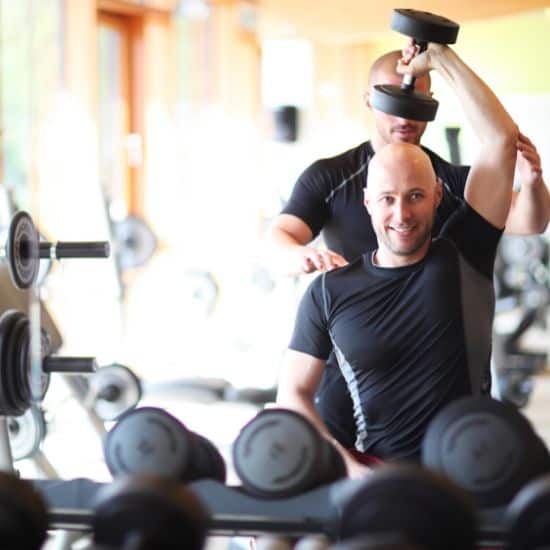Musculoskeletal Issues: What to Do When ER Claims are Rising
Musculoskeletal (MSK) issues, or injuries affecting the bones, muscles, tendons, and other soft tissues, can be a major source of workplace injury and disability. The rising costs of emergency room (ER) and worker’s comp claims related to musculoskeletal issues is a growing concern for leadership and workers alike, especially in aging populations.
Addressing this issue is crucial for improving worker safety and reducing the financial burden of workplace injuries. This article explores the causes and impacts of rising ER and worker’s comp claims related to MSK issues, as well as strategies for addressing and preventing these injuries in the workplace.
How-to Stop Workplace MSK Claims from Increasing
In this post:
1. Identify the Root Causes of Musculoskeletal Issues
2. How to Prevent Musculoskeletal Disorders in the Workplace
3. Offer Workplace MSK Programs
4. Workplace Musculoskeletal Strengthing Programs with Strive
Identify the Root Causes of Musculoskeletal Issues
Musculoskeletal issues are a pressing concern for many workplaces, as they affect employees across all demographics — from office workers to those engaged in high labor jobs. So, why are musculoskeletal issues a problem in the workplace? These issues often stem from factors such as repetitive movements, uncomfortable postures for extended periods, heavy lifting, and prolonged standing or sitting, compounded by a lack of safety protocols. Chronic stress and a sedentary lifestyle lead to tension in muscles and joints, weakening them over time.
To tackle this problem, it’s important for organizations to identify the root causes of musculoskeletal issues in their workplace. This can involve reviewing health data, conducting ergonomic assessments, and engaging in open dialogue with employees to gain their insights and feedback. By taking a proactive approach to musculoskeletal health, organizations can help safeguard their employees against injuries, boost productivity, and promote a healthier, more supportive work environment.
How to Prevent Musculoskeletal Disorders in the Workplace
Musculoskeletal disorders (MSDs) are costly to organizations as they result in substantial medical expenses, lost productivity, and decreased quality of life for affected employees. To address rising claims of musculoskeletal issues, workplaces must implement ergonomic solutions that help prevent MSDs.
Preventative Education
Education is an essential component of any ergonomic program. Teach employees about the importance of ergonomics, the risks of MSK issues, the proper use of ergonomic equipment, and how to maintain proper posture and body mechanics. It’s also helpful to provide employees with resources to help identify potential ergonomic hazards.
Ergonomic Equipment
Ergonomic equipment varies based on the workplace environment, but it can include adjustable height desks and workstations, or specialized tools and equipment that allow for comfortable positioning of hands and arms. Providing ergonomic equipment is essential as it reduces strain on the neck and back. For example:
Office Environments
- Chairs with adjustable height, lumbar support, & armrests
- Keyboards with wrist rests & adjustable height
- Footrests to help maintain proper posture
- Adjustable computer monitor stands to reduce neck strain
- Anti-fatigue mats to reduce stress on the feet & lower back
Manufacturing or Assembly Environments
- Mechanical assist equipment such as lift tables & hoists to reduce heavy lifting
- Workbenches with adjustable height & depth
- Pneumatic lift tables for positioning work at a comfortable height
- Tools with cushioned grips and reduced vibration
- Anti-fatigue mats to reduce stress on the feet & lower back
Job Rotation
Job rotation, a strategy where employees switch between different tasks or roles, can help alleviate MSDs associated with repetitive motions. Rotating employees through different tasks avoids prolonged exposure to repetitive motions, reduces static postures and strain on specific muscle groups, and provides rest and recovery to help prevent fatigue from the physical demands of a specific task.
Training
Train employees on heavy lifting and movement techniques, proper posture, how to safely and efficiently perform repetitive motions, how to use ergonomic equipment properly, and how environmental factors like lighting and noise can affect their health and safety.
Offer Workplace Wellness & MSK Programs
Organizations can leverage wellness programs to encourage employees to take small steps that have long-term value. Preventing MSK issues can either be a part of the broader wellness program or focused on specifically, although employee well-being is best addressed comprehensively. An example of an effective corporate wellness program for a workforce with rising MSK claims could be:
- Monthly health talks focused on chronic stress, physical well-being, & ergonomics
- Weekly recurring instructor-led stretching classes
- Monthly/quarterly onsite chair massage events
A vendor like Strive customizes your MSK program for your population, whether they’re manufacturing, warehouse, long or short-haul drivers, office employees, etc. We also have strength and conditioning specialists available, although this option is typically requested for soldier readiness or rehabilitation.
Workplace Musculoskeletal Strengthing Programs with Strive
Clients who choose Strive for virtual or onsite wellness programs work with a wellness expert to customize their solutions. We have initiatives available 24/7 suited for high labor and high risk workforces that can be as brief as 10-15 minutes so as not to disrupt company operations, and they target MSK issues, hypertension, prediabetes, and weight gain.
Our wraparound delivery model includes participation data to help inform the measurable results of the wellness program, program management, and technology to facilitate sign-ups and liability waivers. Book a discovery call to explore how your workforce can address musculoskeletal issues to lower rising ER and worker’s comp claims.



